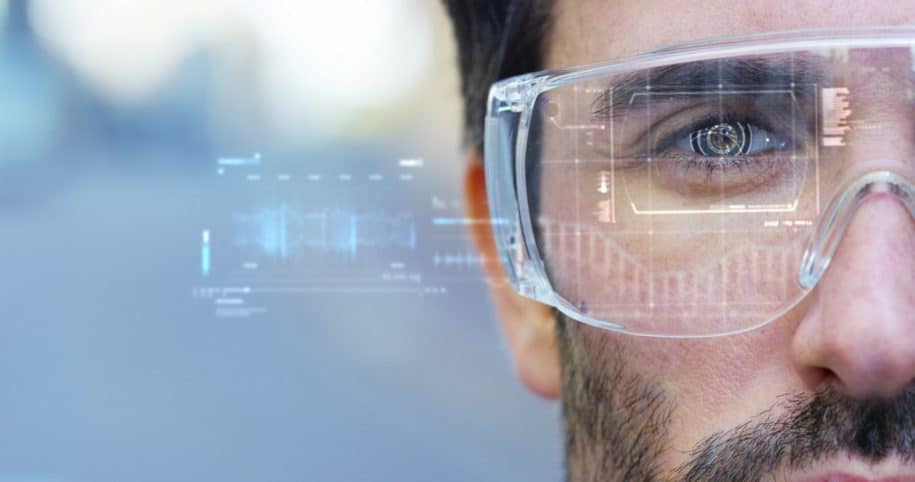Disruptive technology is revolutionizing safety in the workplace. Innovations like smart PPE, virtual reality (VR) safety training programs, and e-learning portals are changing the way EH&S professionals perform their jobs and protect workers. Emerging technologies are also helping EH&S professionals conduct more accurate hazard and PPE assessments, ensuring that all potential hazards are correctly identified and that the appropriate PPE is being correctly used to minimize workers’ exposure to these hazards. The following are four ways that technology has revolutionized PPE and hazard assessments.
1. Smart PPE can help manage inventory and ensure adherence to safety protocols.
Wearable tech can minimize the frequency and severity of worker incidents. They can also be used to improve communication among workers and their safety managers. One great example of wearable tech is smart personal protective equipment (PPE). Smart PPE (e.g., hard hats, safety vests, protective eyewear, and earplugs) can be connected to the internet or Bluetooth to deliver safety information to the wearer, immediate supervisor, or safety manager. Smart PPE can also be embedded with radio-frequency identification (RFID) and quick response (QR) tags to streamline various processes and safety protocols. When smart PPE is connected to a PPE inventory management system, the system can manage supply levels, ensuring that there is enough PPE to protect workers on job sites. Smart PPE can be connected to smartphones or tablets to track crucial data—like damage to the PPE, expiration dates, and compliance with safety regulations. This information can then be sent to a software platform for health and safety management. This helps organizations stay compliant with government-mandated safety regulations and improve the safety of workers on hazardous job sites.
2. Safety training can be done on e-learning portals.
Ongoing safety training is vital to maintaining the health and safety of workers on job sites. However, these training sessions can be time-consuming and difficult to facilitate in critical situations. Instead of organizing one-on-one training, workers can access e-learning resources anytime on their preferred devices. Using their QR tags or assigned logins, they can access modules, tutorial videos, infographics, and checklists. The safety manager can keep up with the progress of all workers on the e-learning portal. Safety managers can also use these portals to check the status of worker safety training, PPE, and respiratory protective equipment (RPE) fit testing, certifications, and more.
3. Electronic headsets can expedite fit testing.
With the smart PPE market projected to grow by US$ 3.27 billion over the next three years, this form of wearable tech is going to become more commonplace on work sites. Unless PPE is worn correctly, it does not efficiently protect workers from related workplace hazards. This is why fit testing of RPE and other PPE is vital to maintaining occupational safety and health protocols. Smart PPE (such as Bluetooth-enabled electronic headsets) can be outfitted with sensing technology that allows expedited fit testing. Workers and their immediate supervisors or safety managers will receive electronic notifications when workers using this technology are not wearing their electronic headsets correctly.
4. Virtual reality (VR) has combined with safety training programs.
An exciting new trend in occupational health and safety training is the use of VR technology. This form of immersive training places workers in very realistic environments that closely mimic their real-world counterparts. VR safety training can be used to help workers recognize hazards on their job sites, without putting anyone in harm’s way. These trainings can be modified to emphasize more common hazards for an individual workplace, whether this includes a liquid spill, sparking cable, or exposed biohazard. Learners can look up, down, in front, and behind them to identify all hazards in each situation. As these virtual scenarios are based on real-world data, after enough practice in VR training, workers can then perform the same hazard assessments on the real job sites.
The ongoing COVID-19 pandemic, frequent natural disasters, and contaminated work sites have made accurate hazard and PPE assessments more important than ever. By utilizing the latest smart PPE, robust EH&S management software, and other disruptive technologies, EH&S professionals can do their jobs more efficiently and create safer work environments for their workers.
Author Bio
The SafetyStratus Research Advisory Group (RAG) brings together thought leaders from the global environmental, health, and safety community to promote best practices and provide key insights in the profession and the industries they serve. The Research Advisory Group also advocates, where practical, the intersection of and advances with the use of technology, such as the SafetyStratus enterprise EHS software platform. Group membership consists of representatives from across varied disciplines and market sectors as well as select members of the SafetyStratus team.
The primary objectives of the SafetyStratus RAG partnership are to:
- Build a strategic partnership between EHS practitioners and the SafetyStratus team.
- Provide engaging and practical content to the global EHS community.
- Provide discipline and market feedback specific to SafetyStratus products and services.
While the objectives of the RAG are varied, the primary public-facing outcome will be available through engaging and practical content found on the SafetyStratus resource pages. Various articles, papers, and other valuable resources will be produced and shared as part of an ongoing effort to cultivate a robust community. Ultimately, the SafetyStratus RAG will expand to have a broader reach and provide opportunities for more inclusion by all interested EHS professionals in a collaborative community environment.



